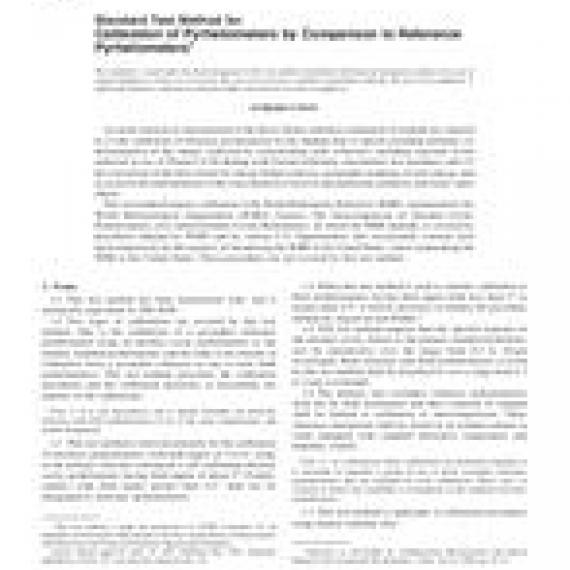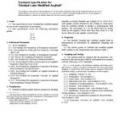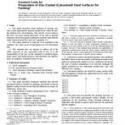No products
ASTM E816-95(2002)
ASTM E816-95(2002) Standard Test Method for Calibration of Pyrheliometers by Comparison to Reference Pyrheliometers
standard by ASTM International, 04/15/1995
Full Description
1.1 This test method has been harmonized with, and is technically equivalent to, ISO 9059.
1.2 Two types of calibrations are covered by this test method. One is the calibration of a secondary reference pyrheliometer using an absolute cavity pyrheliometer as the primary standard pyrheliometer, and the other is the transfer of calibration from a secondary reference to one or more field pyrheliometers. This test method proscribes the calibration procedures and the calibration hierarchy, or traceability, for transfer of the calibrations.
Note 1 - It is not uncommon, and is indeed desirable, for both the reference and field pyrheliometers to be of the same manufacturer and model designation.
1.3 This test method is relevant primarily for the calibration of reference pyrheliometers with field angles of 5 to 6, using as the primary reference instrument a self-calibrating absolute cavity pyrheliometer having field angles of about 5. Pyrheliometers with field angles greater than 6.5 shall not be designated as reference pyrheliometers.
1.4 When this test method is used to transfer calibration to field pyrheliometers having field angles both less than 5 or greater than 6.5, it will be necessary to employ the procedure defined by Angstrom and Rodhe.
1.5 This test method requires that the spectral response of the absolute cavity chosen as the primary standard pyrheliometer be nonselective over the range from 0.3 to 10-m wavelength. Both reference and field pyrheliometers covered by this test method shall be nonselective over a range from 0.3 to 4-m wavelength.
1.6 The primary and secondary reference pyrheliometers shall not be field instruments and their exposure to sunlight shall be limited to calibration or intercomparisons. These reference instruments shall be stored in an isolated cabinet or room equipped with standard laboratory temperature and humidity control.
Note 2 - At a laboratory where calibrations are performed regularly, it is advisable to maintain a group of two or three secondary reference pyrheliometers that are included in every calibration. These serve as controls to detect any instability or irregularity in the standard reference pyrheliometer.
1.7 This test method is applicable to calibration procedures using natural sunshine only.


































